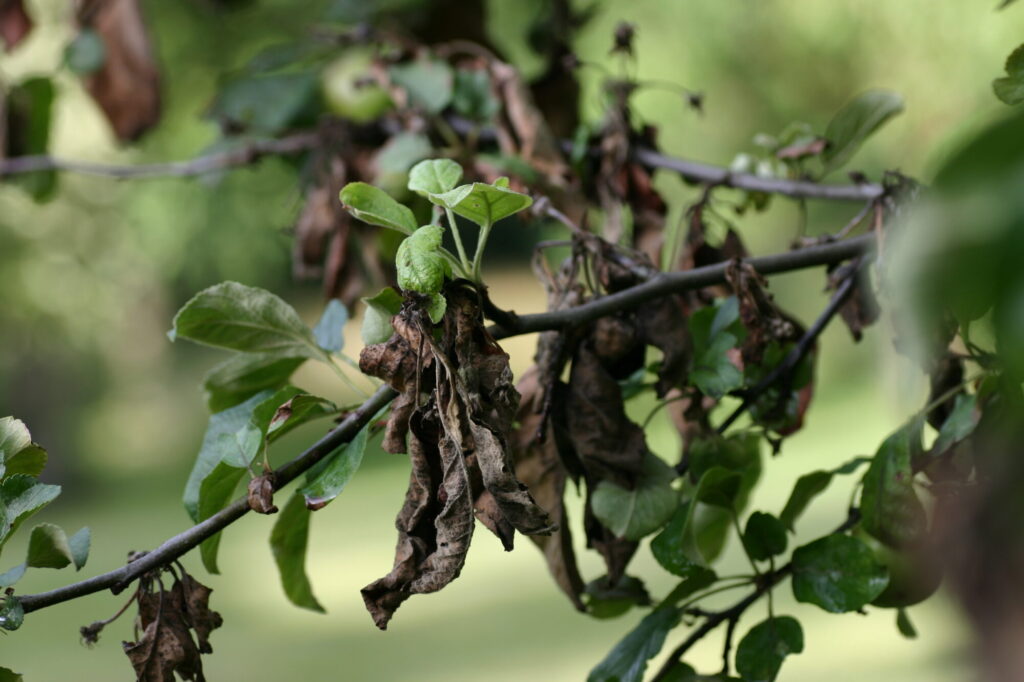Fire blight is a devastating bacterial disease that affects a variety of trees, most notably fruit trees in the Rosaceae family, such as apple and pear trees. This destructive bacteria, Erwinia amylovora, can wreak havoc in orchards and gardens, causing extensive losses and posing a significant threat to tree health. The name “fire blight” aptly describes the intense symptoms it inflicts on trees. These symptoms are dramatic and often appear suddenly. It typically begins with wilting and blackening of leaves, often resembling scorched or burnt foliage. Infected branches take on a charred appearance as if they’ve been scorched by flames. In addition to these external symptoms, infected flowers may turn brown and produce a bacterial exudate, further contributing to the disease’s distinct appearance. Branch and trunk canker symptoms can appear as soon as trees begin active growth.
Erwinia amylovora’s life cycle consists of overwintering in cankers (small to large areas of dead bark that the pathogen killed during previous seasons) on twigs, branches, or trunks of host trees. In spring when the weather is sufficiently warm and moist and trees resume growth, a small percentage of the cankers become active as bacteria multiplies and oozes from branch or twig surfaces in a light tan liquid. The ooze turns dark after exposure to air, leaving streaks on branches or trunks. Once blossoms are contaminated with the bacteria, honey bees become efficient carriers of the pathogen. Injuries on tender, young leaves and shoots, caused by wind, hail, or insect punctures, are easily invaded by the fire blight bacteria – leading to shoot blight. Contaminated pruning tools and equipment can also inadvertently spread the disease if used on infected trees without proper sanitation. Tree vigor has a major influence on the extent of fire blight damage. Once established, the distance the pathogen moves relates directly to the susceptibility of the tree and the rate of growth.
Although there is no guaranteed solution to correct fire blight, there are a few ways to manage the disease. One of the most effective ways of prevention is to choose tree varieties that are naturally resistant to the disease. Pruning infected branches promptly is crucial for preventing the spread of the disease. Removing and destroying infected plant material to prevent the disease from overwintering and recurring in the following season will break the cycle of the disease. Arborists can apply a Cambistat solution which can help minimize the shoot blight stage of a fire blight infection. Keep an eye on weather conditions, as fire blight is most active in warm and humid conditions. Knowledge is a powerful tool in managing fire blight – knowing the signs and symptoms will help you identify when it’s time to call an arborist.
Fire blight is a difficult challenge for tree growers, but with the right knowledge and strategies, it can be managed and even prevented. By selecting resistant tree varieties, practicing proper pruning techniques, and implementing integrated pest management approaches, you can help protect your trees from this destructive bacterial disease. Stay vigilant, educate yourself, and call Homer Tree Care today to keep your trees healthy and thriving.

